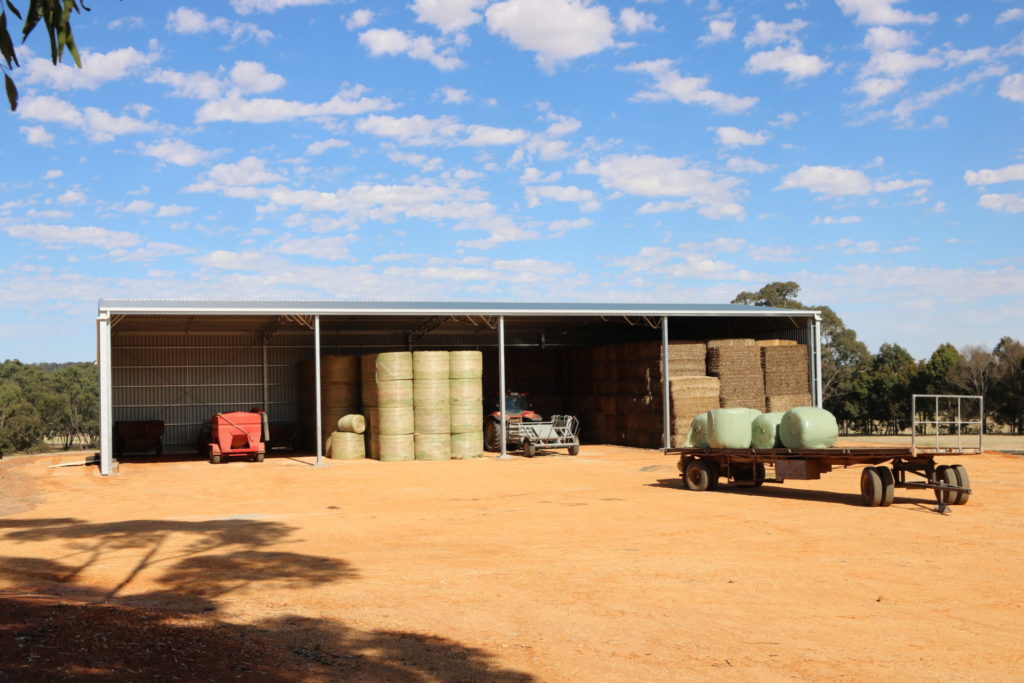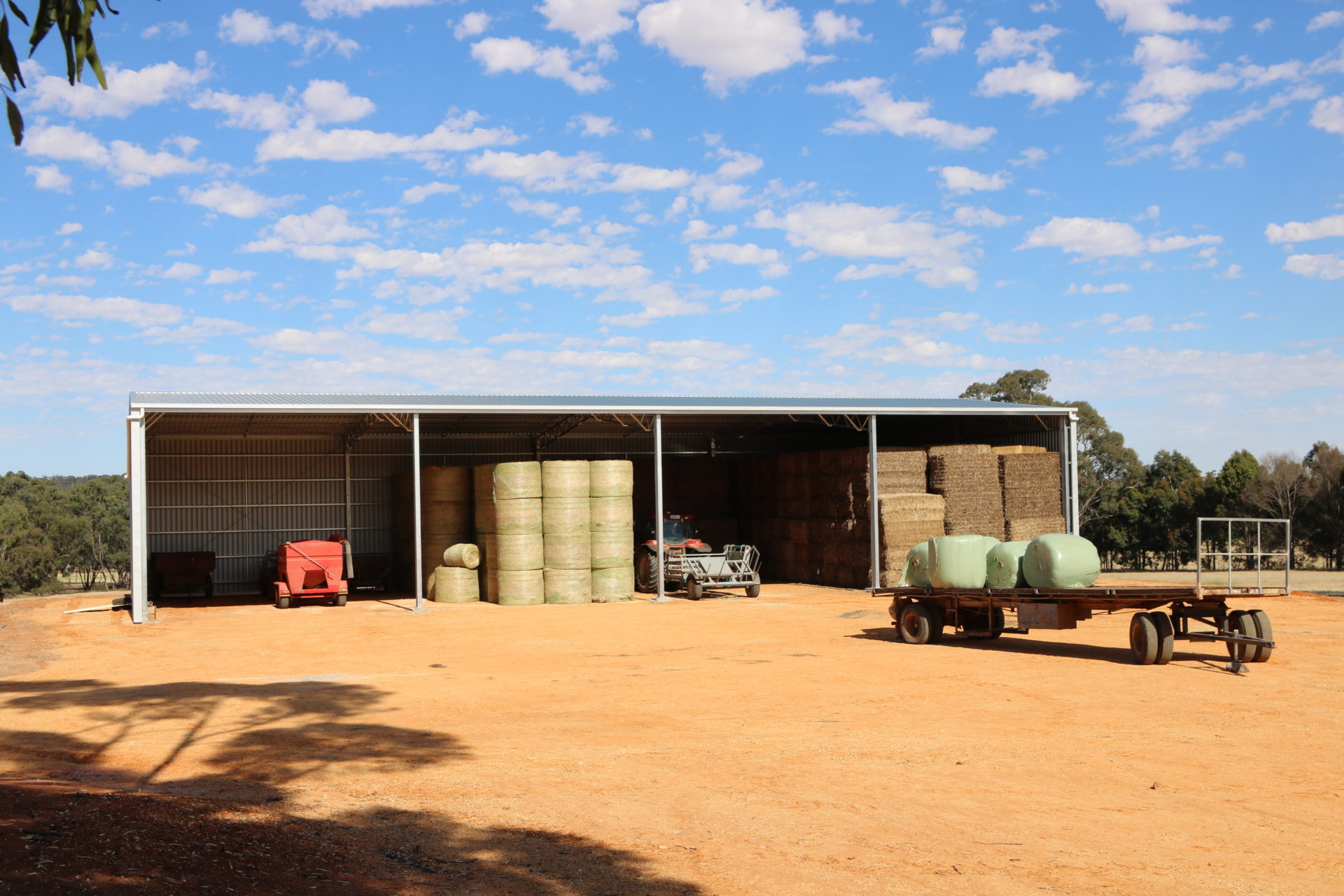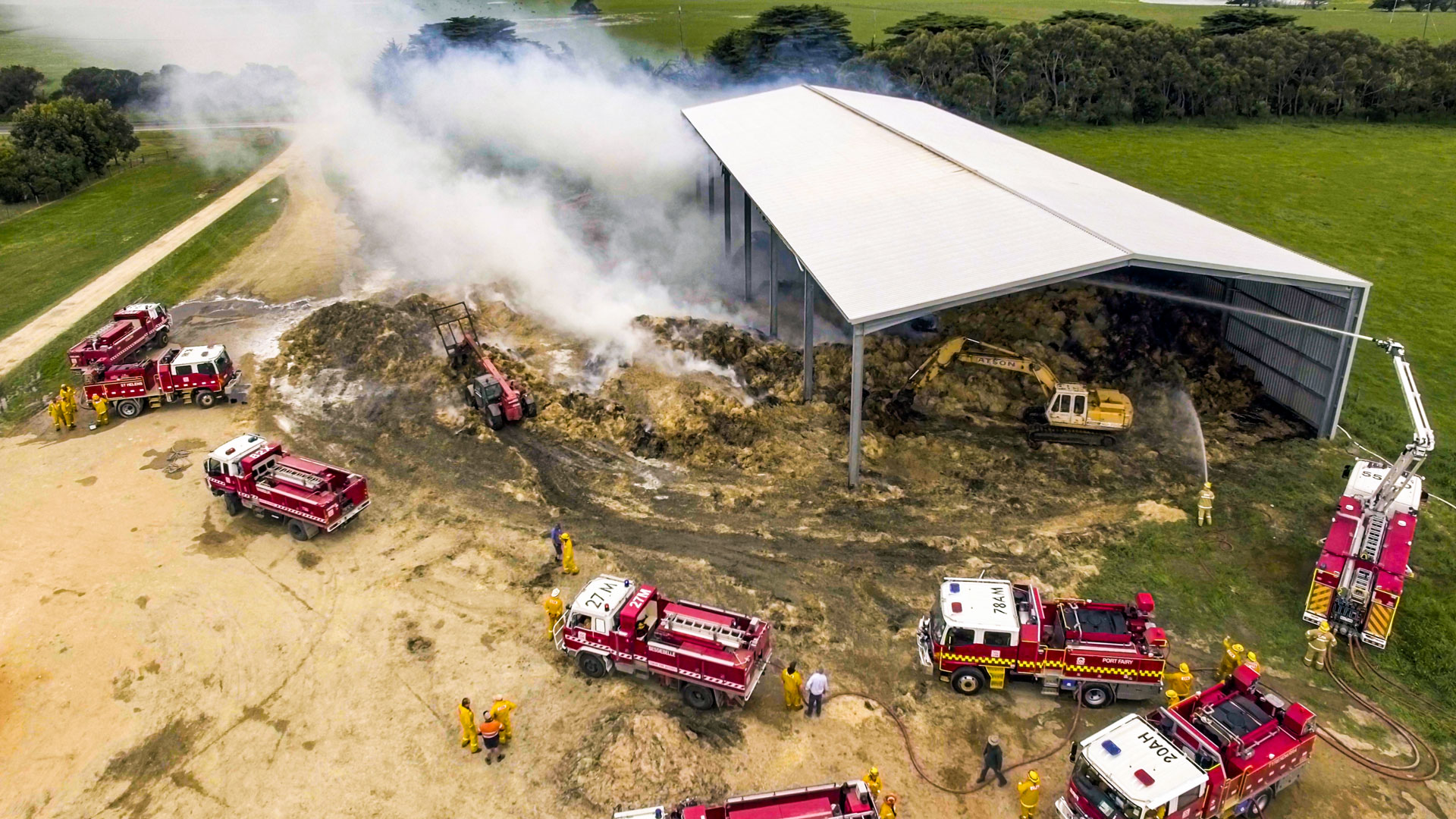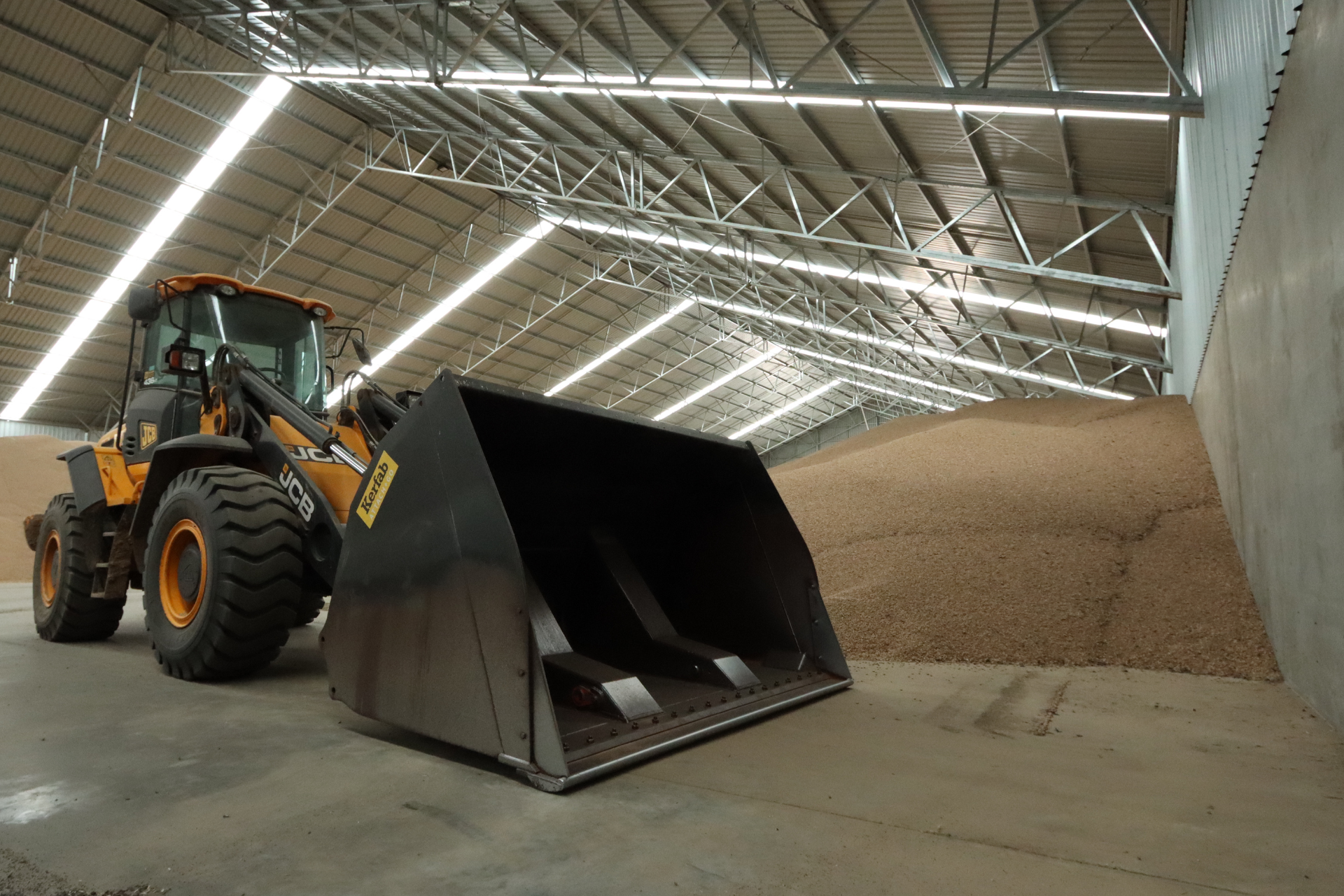There are many benefits of hay sheds and grain sheds and Australian farmers are welcoming the introduction of instant depreciation for fodder storage assets as of 19 August 2018. The new legislation makes it possible to fully claim the cost of building new animal feed storage assets such as silos, hay sheds and grain sheds.
So, why is this law change such good news for primary producers?
Hay provides better energy and more nutrients when stored properly
Sunshine, rain and wind can all have an impact on the quality of exposed hay bales. This includes the leaching of carbohydrates, proteins and minerals as a result of rainwater or sunshine, and/or mould growth which can have a number of implications for stock health and nutrition.
One US study showed that bales stored outside could lose a whopping 50 to 60% of their feed value. Being able to store bales in optimal conditions ( a hot-dip galvanised steel hay shed) can save farmers money that would otherwise be wasted from burnt, spoilt or damaged hay.
Correctly stored stock feed fetches a premium price
We know that correctly stored hay and stock feed converts to greater growth and nutrition for animals, which ultimately means a better bottom dollar for the farmer.
This also means that if you do ever plan to sell excess hay then you’ll be able to ask more for bales that have been stored undercover rather than exposed to weather conditions.
Stock levels can be better planned
Farming can often feel like gazing into a crystal ball trying to anticipate future demand, future prices and future weather and how this will relate to your stock numbers. Rather than planning to offload cattle or sheep before the drier weather hits (when everyone else could be doing exactly the same thing), you could plan to supplement feed stock with stored hay or grain and sell stock at better time.

Quality assets are always a good idea
As a property owner and a business owner, it simply makes sense to take advantage of this full deduction while it is available. Not only could it add to your property value, but it can also reduce your taxable income with a deduction for the full hay shed or grain shed price.
Fodder freight costs can be kept at a minimum
As primary producers will know all too well, moving anything to or from a farm costs money, If you can store grain or hay onsite rather than with third party providers this could potentially save you thousands in freight and/or trucking costs over a year.
Plus, you’ll have the convenience of being able to use, mix and store fodder onsite as it suits your needs.







